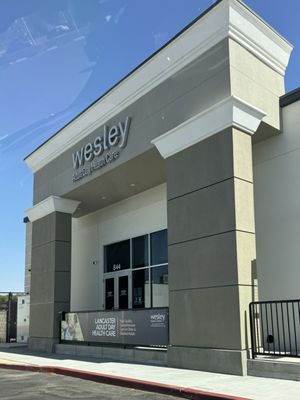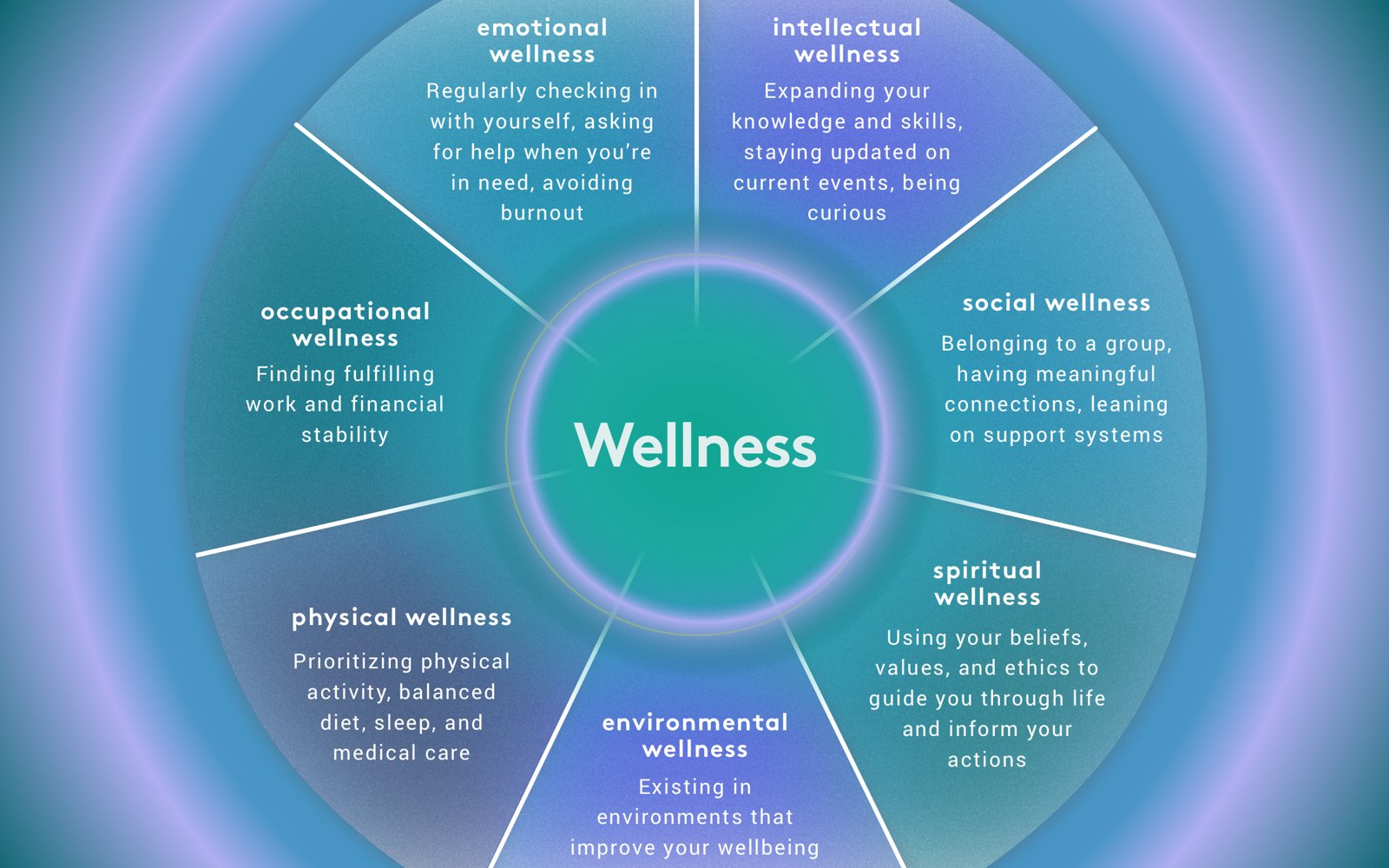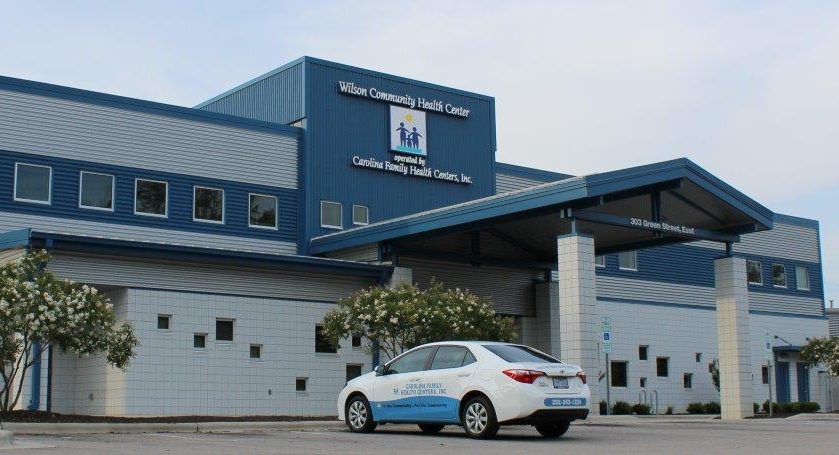The provision of medical services within the Lancaster community is facilitated by a specific healthcare provider. This entity offers a range of treatments and preventative care options to individuals residing in the local area, aiming to improve overall well-being and access to necessary medical attention. Examples of services offered may include primary care, specialized consultations, and wellness programs.
Access to local medical facilities plays a crucial role in promoting community health. The presence of such institutions allows residents to seek timely treatment, manage chronic conditions, and receive vaccinations. This accessibility can lead to reduced hospital readmission rates and improved health outcomes for the population served. Historically, these facilities have evolved to meet the changing healthcare needs of the communities they support.
The following sections will delve into specific aspects of local healthcare accessibility, focusing on available services, patient resources, and how individuals can effectively utilize the offered support systems. This will also include pertinent information related to appointment scheduling, insurance acceptance, and navigating the healthcare landscape within the defined geographical area.
1. Primary Care Services
Primary care services form a foundational component of operations at the Wesley Health Center Lancaster. These services constitute the initial point of contact for individuals seeking medical attention, addressing a wide range of health concerns from routine check-ups and preventative screenings to the diagnosis and management of acute and chronic illnesses. The effectiveness of primary care directly impacts community health outcomes by promoting early detection of diseases, facilitating proactive health management, and preventing the escalation of treatable conditions into more complex and costly medical issues. For instance, regular screenings for hypertension and diabetes, conducted within the primary care setting, can lead to timely interventions and prevent associated cardiovascular complications.
The availability and accessibility of these primary care services at Wesley Health Center Lancaster have a tangible impact on the local population. By offering comprehensive primary care, the center plays a vital role in reducing health disparities and improving overall community wellness. Furthermore, these services serve as a gateway to specialized medical care when needed, ensuring coordinated and continuous patient care. The center’s commitment to providing accessible primary care can lead to healthier lifestyles, decreased emergency room visits for non-emergency conditions, and enhanced quality of life for residents.
In summary, primary care services are integral to the mission and functionality of the Wesley Health Center Lancaster. They contribute significantly to preventative healthcare, disease management, and overall community health. Understanding the scope and importance of these services enables individuals to make informed decisions regarding their healthcare needs, ultimately leading to improved health outcomes and a more resilient community. The continued strengthening of primary care capacity at this location remains critical for addressing the evolving healthcare demands of the population it serves.
2. Behavioral Health Support
Behavioral health support at Wesley Health Center Lancaster represents an integrated component of comprehensive healthcare delivery. This facet acknowledges the intrinsic link between mental and physical well-being, recognizing that mental health conditions can significantly impact physical health outcomes, and vice versa. The inclusion of behavioral health services aims to address a spectrum of needs, ranging from stress management and coping strategies to the diagnosis and treatment of mental health disorders. A patient presenting with chronic pain, for example, may benefit from cognitive behavioral therapy offered within the center, addressing the psychological impact of pain and improving coping mechanisms. This integrated approach departs from siloed medical practices, striving for holistic patient care.
The provision of behavioral health support within the structure of Wesley Health Center Lancaster is essential for several reasons. First, it enhances access to mental health services, particularly for individuals who may face barriers such as stigma, financial constraints, or geographical limitations. Second, it facilitates early identification and intervention for mental health concerns, preventing escalation and improving treatment outcomes. For instance, a primary care physician at the center may screen patients for depression or anxiety during routine check-ups, initiating timely referrals to behavioral health specialists within the same facility. Third, it promotes a collaborative care model, where medical and behavioral health professionals work together to develop individualized treatment plans, ensuring coordinated and consistent care delivery. This collaborative environment fosters a more comprehensive understanding of the patient’s needs and circumstances.
In conclusion, the integration of behavioral health support at Wesley Health Center Lancaster signifies a commitment to addressing the diverse healthcare needs of the community it serves. By recognizing the interconnectedness of mental and physical health, the center strives to provide accessible, comprehensive, and coordinated care. Ongoing efforts to expand and strengthen these services are critical for improving the overall well-being of individuals and families within the local area, promoting resilience, and reducing the burden of mental health conditions. The center’s model exemplifies a move towards integrated healthcare systems that prioritize holistic patient care.
3. Preventative Care Focus
The emphasis on preventative care at Wesley Health Center Lancaster is intrinsically linked to its mission of promoting community health and well-being. This focus translates into a proactive approach to healthcare, prioritizing early detection and intervention over reactive treatment of established illnesses. The center implements various strategies to achieve this, including routine screenings, vaccinations, health education programs, and lifestyle counseling. For example, the center might offer free blood pressure screenings at community events, allowing early identification of hypertension and subsequent intervention to prevent cardiovascular complications. Similarly, providing vaccinations against influenza and pneumococcal disease reduces the incidence of these infections, particularly among vulnerable populations. The practical significance of this preventative approach lies in its ability to reduce the burden of disease and improve long-term health outcomes.
The effectiveness of the preventative care focus hinges on several factors, including community engagement, accessibility of services, and patient adherence. Wesley Health Center Lancaster actively works to overcome barriers to access by offering services at convenient locations, accepting a range of insurance plans, and employing multilingual staff to address diverse community needs. Furthermore, the center utilizes health education programs to empower individuals to take control of their health through informed decision-making and healthy lifestyle choices. Examples include workshops on nutrition, exercise, and stress management. These initiatives contribute to a culture of prevention, where individuals are actively engaged in maintaining their health and seeking timely medical attention when necessary.
In summary, the preventative care focus at Wesley Health Center Lancaster is a cornerstone of its approach to healthcare. By prioritizing early detection, health education, and community engagement, the center aims to reduce the incidence of disease, improve health outcomes, and promote a healthier community. The challenges associated with implementing a successful preventative care program, such as addressing health disparities and ensuring patient adherence, require ongoing efforts and innovative strategies. However, the potential benefits of preventing illness and promoting wellness far outweigh the challenges, underscoring the importance of this focus within the broader context of community healthcare.
4. Community Partnerships
Community partnerships are integral to the effective operation and outreach of Wesley Health Center Lancaster. These collaborations extend the center’s reach and amplify its impact within the local population. The center’s efficacy is dependent not only on its internal capabilities but also on the strength of its connections with external organizations. One example involves partnerships with local schools to provide health education programs for students and their families. These programs are designed to promote healthy lifestyles and prevent common childhood illnesses. The effect of these partnerships is improved health literacy and reduced rates of preventable diseases among school-aged children. These partnerships also allow the center to access resources and expertise that might not otherwise be available internally.
Another critical aspect of community partnerships is their role in addressing social determinants of health. Wesley Health Center Lancaster collaborates with social service agencies and community organizations to connect patients with resources such as housing assistance, food banks, and transportation services. These partnerships recognize that health outcomes are influenced by a range of factors beyond medical care, and that addressing these factors is essential for improving overall well-being. For example, partnering with a local food bank allows the center to provide food vouchers to patients experiencing food insecurity, directly addressing a barrier to good health. This proactive approach highlights the center’s understanding of the complex needs of its patient population and its commitment to providing holistic care.
In conclusion, community partnerships are not merely an adjunct to Wesley Health Center Lancaster, but a fundamental element of its mission and operational strategy. These collaborations enhance the center’s capacity to deliver comprehensive care, address social determinants of health, and promote community well-being. Maintaining and strengthening these partnerships requires ongoing communication, shared goals, and a commitment to collaboration. The continued success of Wesley Health Center Lancaster is, in part, predicated on the strength and effectiveness of its community partnerships, which serve as a critical link between the center and the diverse needs of the population it serves.
5. Accessible Location
The geographical accessibility of a healthcare facility is a critical determinant of its utilization and overall impact on community health. In the context of Wesley Health Center Lancaster, strategic location becomes a primary factor influencing patient access and the effective delivery of medical services to the target population.
-
Proximity to Public Transportation
The availability of public transportation options directly impacts access, particularly for individuals without personal vehicles. The location of Wesley Health Center Lancaster relative to bus routes, train stations, or other forms of public transit determines the ease with which individuals can reach the facility. A location well-served by public transportation reduces barriers to care and enhances accessibility for a broader segment of the community.
-
Centrality Within the Service Area
A central location within the designated service area minimizes travel time and distance for a majority of the population. This can lead to increased utilization of services, especially for routine check-ups and preventative care. The more centrally located Wesley Health Center Lancaster, the more likely residents are to seek timely medical attention, leading to improved health outcomes.
-
Availability of Parking Facilities
Adequate parking facilities are essential for patients who choose to drive to Wesley Health Center Lancaster. Limited parking can create a significant barrier, especially for individuals with mobility issues or those accompanied by family members. The provision of sufficient and accessible parking spaces enhances convenience and promotes easier access to medical services.
-
Accessibility for Individuals with Disabilities
Compliance with accessibility standards, including ramps, elevators, and accessible restrooms, is crucial for ensuring that Wesley Health Center Lancaster is accessible to individuals with disabilities. These features remove physical barriers and promote equal access to healthcare services for all members of the community. Failure to adhere to these standards limits access and undermines the center’s commitment to inclusivity.
The aforementioned facets underscore the multifaceted nature of “Accessible Location” and its direct bearing on the functionality and impact of Wesley Health Center Lancaster. The strategic consideration of these elements contributes significantly to reducing barriers to care and improving the overall health and well-being of the community it serves. The effectiveness of a health center is intrinsically linked to its geographical accessibility and the extent to which it accommodates the diverse needs of its patient population.
6. Insurance Coverage
Insurance coverage constitutes a fundamental element in accessing healthcare services at Wesley Health Center Lancaster. The center’s ability to serve the community effectively is directly related to the range of insurance plans it accepts, as well as its policies regarding uninsured patients. Understanding the intricacies of insurance coverage options is crucial for patients seeking medical care at this facility.
-
Acceptance of Major Insurance Providers
Wesley Health Center Lancaster’s agreements with major insurance providers dictate the extent to which insured individuals can utilize its services. If the center participates in a patient’s insurance network, the patient typically pays a lower out-of-pocket cost for care, often limited to co-pays, co-insurance, and deductibles. Non-participation in an insurance network can result in significantly higher costs for the patient, potentially deterring them from seeking needed medical attention. Therefore, the breadth of insurance plans accepted is a direct indicator of the center’s accessibility.
-
Medicaid and Medicare Participation
Participation in Medicaid and Medicare programs is essential for Wesley Health Center Lancaster to serve low-income individuals and seniors. Medicaid provides coverage to eligible low-income individuals and families, while Medicare covers individuals aged 65 and older, as well as certain younger individuals with disabilities. A health center’s participation in these programs ensures that vulnerable populations have access to essential medical services. The extent of this participation, including acceptance of various managed care plans under Medicaid, further influences accessibility.
-
Sliding Fee Scale Programs for Uninsured Patients
Recognizing that not all individuals possess health insurance, Wesley Health Center Lancaster may offer sliding fee scale programs based on income and family size. These programs provide discounted care to uninsured patients, making healthcare services more affordable. The availability and generosity of sliding fee scale programs directly impact the ability of low-income, uninsured individuals to receive medical attention. The specific criteria for eligibility and the level of discount offered are key factors determining the program’s effectiveness.
-
Patient Assistance Programs and Resources
Beyond direct insurance coverage, Wesley Health Center Lancaster may offer or connect patients with various patient assistance programs. These programs can help patients afford medications, medical devices, or other healthcare-related expenses. Providing information and assistance in navigating these programs is crucial for ensuring that patients can access the care they need, regardless of their insurance status or financial situation. Links to pharmaceutical company assistance programs or local charitable resources can significantly reduce the financial burden on patients.
In conclusion, the interplay between insurance coverage and Wesley Health Center Lancaster is multifaceted and significantly impacts access to healthcare. The center’s participation in various insurance networks, including Medicaid and Medicare, its provision of sliding fee scale programs, and its support for patient assistance initiatives all contribute to its capacity to serve a diverse population. The ongoing evaluation and optimization of these insurance-related factors are essential for ensuring equitable access to medical care within the community.
Frequently Asked Questions Regarding Wesley Health Center Lancaster
The following questions address common inquiries regarding services, access, and policies at Wesley Health Center Lancaster. This information is provided to clarify operational aspects and enhance understanding of available healthcare options.
Question 1: What range of medical services are provided at Wesley Health Center Lancaster?
Wesley Health Center Lancaster offers a variety of services, including primary care, preventative screenings, behavioral health support, and chronic disease management. Specific service availability may vary; direct consultation with the center is recommended for detailed information.
Question 2: What insurance plans are accepted at Wesley Health Center Lancaster?
Wesley Health Center Lancaster accepts a variety of insurance plans, including Medicaid, Medicare, and select private insurance policies. It is advisable to contact the center directly or consult the official website to confirm specific plan acceptance.
Question 3: Are services available to individuals without health insurance at Wesley Health Center Lancaster?
Wesley Health Center Lancaster offers a sliding fee scale program for eligible uninsured individuals. This program adjusts the cost of services based on income and family size, potentially making healthcare more accessible.
Question 4: How does one schedule an appointment at Wesley Health Center Lancaster?
Appointments can be scheduled by contacting Wesley Health Center Lancaster directly via telephone or through the online portal, if available. New patients may be required to complete an initial registration process.
Question 5: What are the operating hours of Wesley Health Center Lancaster?
The operating hours of Wesley Health Center Lancaster may vary. Contacting the center directly or consulting the official website will provide accurate and up-to-date information regarding hours of operation.
Question 6: What measures are in place to ensure patient confidentiality at Wesley Health Center Lancaster?
Wesley Health Center Lancaster adheres to strict patient confidentiality protocols in compliance with HIPAA regulations. Patient information is protected and disclosed only as permitted by law or with explicit patient consent.
This FAQ section provides a general overview of common inquiries. For detailed information and specific concerns, direct communication with Wesley Health Center Lancaster is recommended.
The subsequent section will explore patient resources and support available through Wesley Health Center Lancaster.
Navigating Healthcare at Wesley Health Center Lancaster
Effective utilization of healthcare services at Wesley Health Center Lancaster requires informed decision-making and proactive engagement. The following tips are designed to facilitate access and optimize the patient experience.
Tip 1: Verify Insurance Coverage Prior to Appointment Scheduling: Contact both the insurance provider and Wesley Health Center Lancaster to confirm coverage details, including co-pays, deductibles, and network participation. This proactive step minimizes potential billing discrepancies and ensures accurate cost estimations.
Tip 2: Prepare a Comprehensive List of Medications and Medical History: Prior to a medical appointment, compile a detailed list of all current medications (including dosages), allergies, and relevant medical history. This information enables healthcare providers to make informed decisions and avoid potential drug interactions.
Tip 3: Utilize Available Preventative Services: Wesley Health Center Lancaster emphasizes preventative care. Schedule routine screenings, vaccinations, and wellness check-ups as recommended by healthcare providers. Early detection and proactive management of health risks contribute to improved long-term health outcomes.
Tip 4: Inquire About Sliding Fee Scale Programs if Uninsured: If health insurance coverage is lacking, inquire about eligibility for the sliding fee scale program offered by Wesley Health Center Lancaster. Providing necessary documentation of income and family size can potentially reduce the cost of healthcare services.
Tip 5: Actively Engage in the Patient-Provider Dialogue: Prepare questions and concerns in advance of medical appointments. Open communication with healthcare providers facilitates a better understanding of diagnoses, treatment options, and self-management strategies.
Tip 6: Confirm Appointment Details and Cancellation Policies: Verify appointment dates, times, and locations prior to the scheduled visit. Familiarize yourself with the center’s cancellation policies to avoid potential fees associated with missed appointments.
Tip 7: Explore Available Community Resources: Wesley Health Center Lancaster often collaborates with community organizations to provide access to additional resources, such as transportation assistance, food banks, and housing support. Inquire about available resources that may address social determinants of health.
Adhering to these recommendations can significantly enhance the patient experience at Wesley Health Center Lancaster, promoting effective access to care and improved health outcomes. Proactive engagement and informed decision-making are essential for navigating the healthcare system effectively.
The following section will present concluding thoughts, summarizing key aspects discussed throughout this article.
Wesley Health Center Lancaster
This exploration has presented a comprehensive overview of Wesley Health Center Lancaster, emphasizing its pivotal role in providing medical services to the local community. Key aspects examined include primary care offerings, behavioral health support, preventative care initiatives, community partnerships, accessibility considerations, and insurance coverage policies. Each of these elements contributes to the center’s overall effectiveness in addressing the healthcare needs of the population it serves.
The continued success of Wesley Health Center Lancaster necessitates ongoing evaluation, adaptation to evolving community needs, and sustained commitment to providing accessible and comprehensive care. The center’s impact extends beyond individual medical treatment, shaping the health and well-being of the entire Lancaster community. Further engagement with the center and exploration of its resources are encouraged for all residents seeking to optimize their healthcare outcomes.



